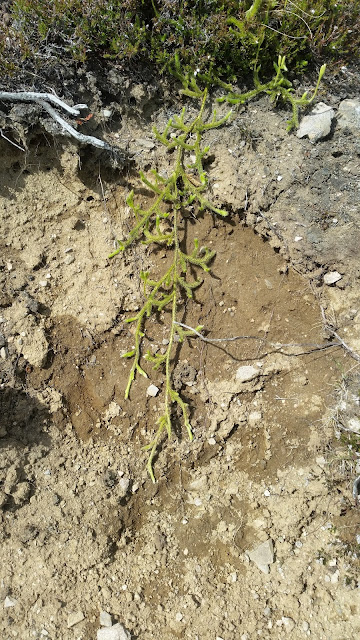It’s orchid time down on Newtonmore Golf Course and I took
advantage of a few warm days to have two leisurely walks through the golf
course and along the Wildcat trail. I managed to find all five kinds of orchids
but have not yet gone looking for the Frog Orchids which are much harder to
find.
 |
| Orchids, left to right: Fragrant, Northern Marsh, Greater Butterfly and Heath Spotted |
The distribution of orchids was a bit different this year. There are several Greater Butterfly-orchids on the top golf course quite near the extensive sewage pipe works which has completely destroyed the grassland alongside the track. Luckily the golf course rough on the other side of the track seems to be flourishing.
There are plenty of orchids on the lower golf course in the rough especially
alongside number 16 fairway where I was astonished to find 52 small white
orchids which is the most I’ve ever seen and they are spread widely. Small
white is quite a scarce orchid. If you are looking for it – it’s small and
white! It is quite easy to confuse with Alpine Bistort (Persicaria vivipara) from
a distance. Alpine Bistort has small flowers at the top but little bulbils
lower down so that it can either reproduce from seed if the flowers get
pollinated or vegetatively as the little bulbils will grow into new plants when
they fall.
 |
| \Left:Alpine Bistort, Right: Small-white orchid |
There were plenty of insects to do the pollinating. The heads of the Hogweed were covered with little flies:
and the Melancholy Thistle had attracted the bees which were completely covered in pollen.
I also found a weird -looking fly lying in the grass beneath
a Birch tree. It seemed rather groggy and allowed me to take pictures of it
without flying away. It was about 2 cm across and had a distinctive yellow bar
across the top of its abdomen and had yellow antennae and legs as well.
It was easily identified by Google lens as a Birch Sawfly (Cimbex femoratus). They spend most of their life as larvae and only last eight days as flies so I suspect this one was on its eighth day! You do have to be careful with Google lens and checkout its suggestions but it can be helpful to know where to start.









.jpg)
.jpg)



.jpg)

































